Caramelizing sugar is a term most often applied to melting sugar until it becomes a caramel color liquid. Caramelized sugar is simply a mixture of sugar and water cooked until it becomes syrupy and darkens, and reaching a temperature from 340 to 350 degrees F.
Learn how easy it is to caramelize sugar for topping your flans, making caramels, and other desserts. The technique varies on what you are using the caramel for, so care should be taken to note in your recipe what kind of caramel is called for. For example, the caramel needed for caramel candies is much less cooked than what’s needed for spun sugar.
Always caramelize sugar in small batches, starting with no more than 2 cups of sugar. The recipe below is for a small batch, as would be needed for a flan.
IMPORTANT: A cook must have enough time to stand right by the pot as the process is going on.
- 1 cup granulated sugar
- 2 tablespoons water
- Drop of lemon juice, fresh-squeezed (optional)
- Equipment Needed:
- Always start with a clean pan and utensils, as any dirt or debris can cause crystals to form around it
- Heavy-bottom, high-sided saucepan
- Wood spoon or silicone spatula
-
In a heavy-bottom, high-sided saucepan over low to medium-low heat, combine 1 cup sugar, water, and a drop of lemon juice (the lemon juice keeps the mixture from hardening). NOTE: I find that by maintaining a low heat on my stove, I have more control over the caramelizing process, as it is really easy to burn.
-
Cook, stirring constantly with a wooden spoon or silicone spatula, until sugar dissolves and mixture just begins to simmer. Sugar melts at about 320 degrees F. and will turn to a clear liquid at that temperature.
-
After sugar dissolves and syrup is simmering, cook for approximately 8 to 10 minutes, without stirring. Hold handle of pan and gently tilt the pan off the heat to distribute color evenly as sugar caramelizes. NOTE: Boiling times will vary according to different stove tops and other factors.
-
If using a digital instant-read thermometer, the temperature on your cooking thermometer should register a final temperature of approximately 340 to 350 degrees F. and the syrup should have a golden brown (light amber) color. Watch the changing of the color and the temperature carefully as it can go past the light brown stage quickly and burn. If you think it is close to being done but are scared of burning it, you can take it off the heat and it will finish due to the residual heat.
-
Immediately remove from heat and pour into individual ramekins or custard dishes, coating the bottoms evenly (tilt the dishes so that the caramel coats the bottom).
-
Set aside and let cool. To stop the caramel from cooking, some recipes have you dip the bottom if the pot in ice water for 10 seconds.
-
Photos showing stages of the caramelizing process:
-

-
Stage 1

-
Stage 2

-
Stage 3

-
Stage 4

-
Stage 5 - Done - Remove from heat immediately.
-
Once the caramelizing process is complete, and if you will be making a caramel sauce and will be adding cream or another liquid, this should be done very carefully, as the liquid will hiss and sputter. Add the liquid at the edge of the pan, slowly, and stirring as it is added.
-
Water boils at lower temperatures at higher altitudes. At sea level, the boiling point of liquids is 212 degrees F., but for every 500 feet above sea level, the boiling point decreases by 1 degree F. due to less resistance on surface molecules. For example, at 5,000 feet, water boils at 202 degrees F., which is 10 degrees less than at sea level. The lower the boiling point, the quicker evaporation occurs.
-
High altitude: For every 1,000 feet (300 metres) that you are above sea level, subtract 2 degrees F. (1 degree C) from the temperatures given in your candy recipe.
 I get many readers asking what cooking/meat thermometer that I prefer and use in my cooking and baking. I, personally, use the Thermapen Thermometer. Originally designed for professional use, the Super-Fast Thermapen Thermometer is used by chefs all over the world. I only endorse a few products, on my web site, that I like and use regularly.
I get many readers asking what cooking/meat thermometer that I prefer and use in my cooking and baking. I, personally, use the Thermapen Thermometer. Originally designed for professional use, the Super-Fast Thermapen Thermometer is used by chefs all over the world. I only endorse a few products, on my web site, that I like and use regularly.
You can learn more or buy yours at: Super-Fast Thermapen Thermometer.
Sponsored Content
Categories:
Candy Hints & Tips Caramel Condiments - Sauces - Butters - Relishes - Jam and Jelly Recipes Cooking Lessons - Cooking 101 Sugar Hints & Tips
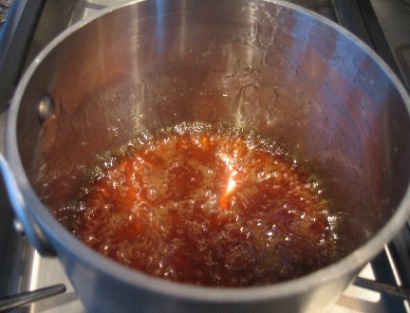
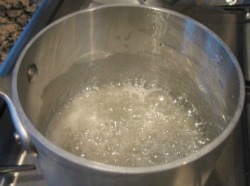
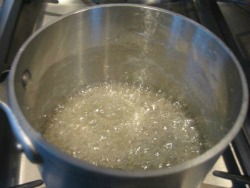
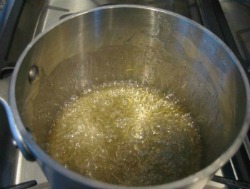
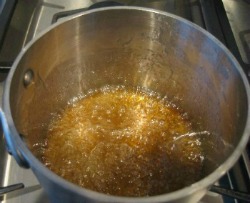
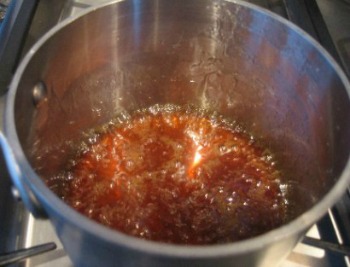
11 Responses to “Caramelizing Sugar Recipe – How To Caramelize Sugar”
Rosie Patterson
High altitude in Mtns
Sugar will not carmilize for Flan
Turns to white hard sugar
Help never happens in Fl
Linda Stradley
High Altitude Cooking: Water boils at lower temperatures at higher altitudes. At sea level, the boiling point of liquids is 212 degrees F., but for every 500 feet above sea level, the boiling point decreases by 1 degree F. due to less resistance on surface molecules. For example, at 5,000 feet, water boils at 202 degrees F., which is 10 degrees less than at sea level. The lower the boiling point, the quicker evaporation occurs.
Thank you Rosie for making me aware of this problem. It just didn’t cross my mind. – Linda Stradley
Allyssa Tucker
So what do we need to do if we live in a higher altitude to make it turn to caramel. I have tried 4 times now and I just keep getting hard clumps of sugar.
Linda Stradley
High altitude: For every 1,000 feet (300 metres) that you are above sea level, subtract 2 degrees F. (1 degree C) from the temperatures given in your candy recipe.
Dianne
I’m looking for sites that have information about the process of caramelizaton rather than sites that talk about melting sugar. I’ve got a few pounds of caramelized sugar left over after my holiday baking. What should I do with it…?
Julie
I have been trying to make a caramel glaze for doughnuts. Each time I try to add butter and cream to the caramelized sugar – it turns into a hard ball and I can’t mix the ingredients in. Help!
Linda Stradley
Check out this recipe using butter and cream: Homemade Salted Caramel Recipe
Linda M.
Hi Linda, caramel seems to be my nemesis. I love your photos – a big help. Mine goes through stage 1 and maybe stage 2, but then never turns brown. I cooked it for at least 20 mins. At sea level. Would appreciate any ideas.
Thanks!
Mark W.
How long will this last in the fridge or freezer?
Just Me
Sugar is its own preservative and should last until it gets moldy.
Car Tailing
Hi, thanks for sharing your recipe with us! And the process is helpful! Also, for sites that have information about the process of caramelization rather than sites that talk about melting sugar. There a few pounds of caramelized sugar left over after my holiday baking. What should they have to do with it? Thanks!